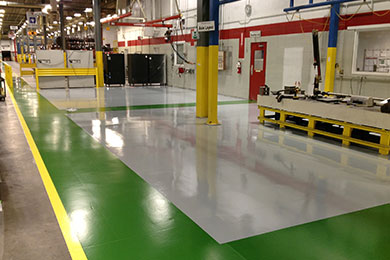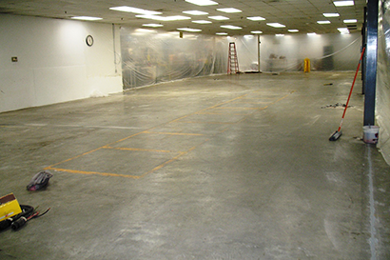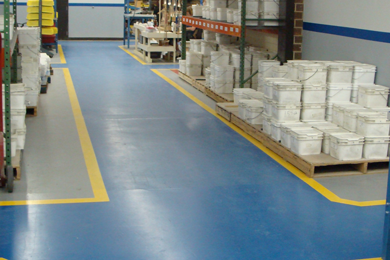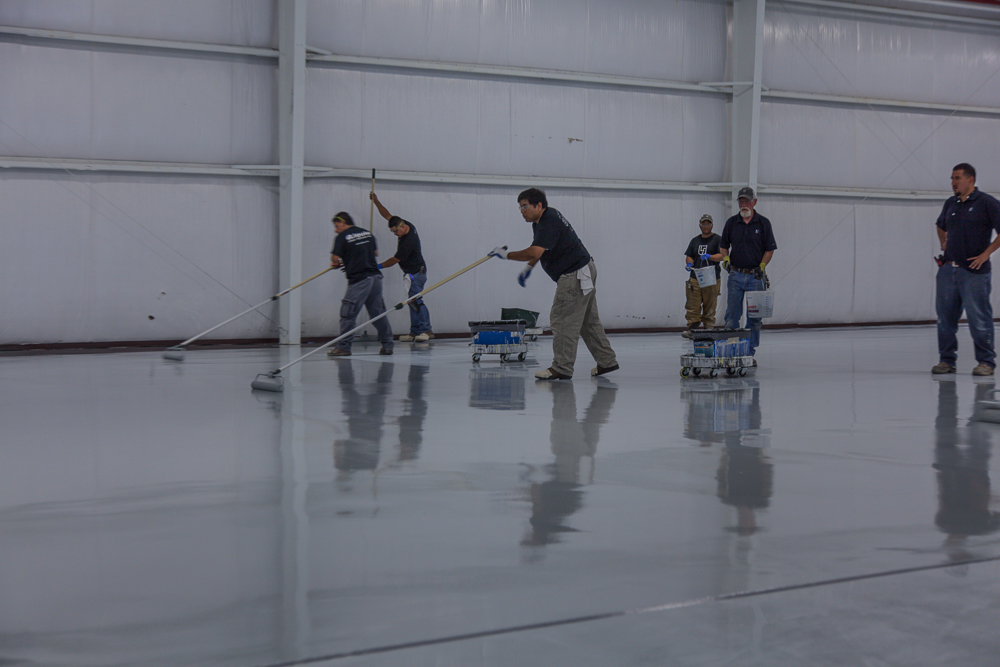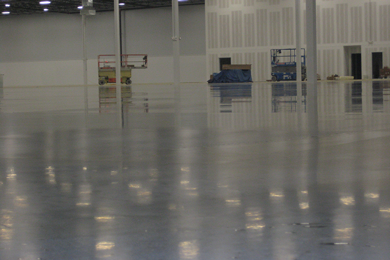Easy Steps to Perfect Commercial Floors with Liquid Floors
Congratulations on your new floor coating! You now have a true world-class product that will make your facility safer, more attractive, and easier to maintain over the long haul. As with all smart investments, however, a little maintenance is required to get the most returns. With that in mind, here is a list of easy steps that will lead to perfect commercial floors. Daily sweepings with a soft-bristled broom or mechanical sweeper will remove foreign material that can dull the finish and impact the coating’s anti-slip properties. Industrial brooms are available at most hardware and janitorial supply outlets. Once-a-week auto scrubbings are advisable to remove stains, enhance appearance, and prolong usable life. Clean spills as soon as possible. Many of the chemicals used in industrial environments contain caustic substances, toxins, and other health and safety hazards that can impact your surroundings if not removed right away. Consult the product’s SDS
Why Floor Preparation is Important – Epoxy Flooring?
Epoxy floor coatings are durable and affordable. They are a perfect solution if you’re looking to cover a concrete surface in a time-effective manner. To get the most benefit from these products, however, it’s important to first prepare the area for treatment. Fortunately, the process is simple and straightforward. Here’s a look at our basic installation process. We think this will help you understand why floor preparation is important. Remove all items from the room to be treated. It’s impossible to do a good job while trying to work around table legs, pallets, etc. Then the floor needs to be mechanically prepared by either, shot blasting, diamond grinding or scarifying. Next the area needs to be thoroughly cleaned and vacuumed. Once the floor is clean, then it’s ready to apply the first coat of epoxy. Allow the first coat of epoxy to tack over before applying a second coat if
Flooring Maintenance Tips for High-Traffic Areas
Areas that see high traffic can be particularly brutal for floors. This could be somewhere such as a busy hospital that might see thousands of feet traverse its hallways each day or an industrial plant that must endure the added burden of forklifts and pallet jacks as well as numerous footsteps. Following some basic floor maintenance strategies can help your floor last longer while still looking fantastic. 1. Clean Frequently At least daily, sweep the floor to remove dirt and debris. You should also follow this step if you are going to be mopping. Be sure to spot clean as soon as possible after a spill. Choose a cleanser based on the type of material that your commercial floor is made from. Otherwise, you could strip the shine from it, leaving it dull and dingy looking. 2. Cover It Up In order to protect your floor in high traffic areas
Which Types of Flooring Can Epoxy Be Applied To?
Epoxy is often thought of as being the ideal covering for concrete flooring. For a range of industrial and commercial spaces, epoxy coatings provide a great deal of protection and visual appeal. These types of floorings are notorious for getting a great deal of high-energy traffic in the form of motorized vehicles as well as those that handle materials. There are some floor substrates that are not suitable for coverage with epoxy, though. Wood Wood flooring is notorious for its give and flexibility. This is especially true of them as they age and are exposed to wear and tear. This is something that should be considered even if a wood floor is new. Due to the likelihood of the floor becoming structurally compromised at some point, applying epoxy coatings to it within an industrial space is not typically recommended. Untreated Concrete Floors For businesses that have untreated concrete flooring, epoxy
Will Winter Slow the Curing Time of My Floor?
Winter is known for many things: colder temperatures, icy conditions, and snowflakes. Lesser-known would be winter's effect on epoxy curing times. Before scheduling an epoxy installation, it is important to know how winter weather will affect the curing time of your new floor. What Does "Curing" Mean? When an epoxy floor is installed, the resin is initially a thick but pliable liquid. After preparing and thoroughly cleaning the floor's surface, the epoxy is applied and allowed to self-level. The finished surface must be allowed to dry and harden, or cure. Temperature, humidity, and thickness of the epoxy all play a role in curing times. Moving equipment onto your new floor or allowing foot traffic too soon will cause significant damage to the surface. Allowing adequate time for proper curing is a crucial step in the installation process. How Does Temperature Affect Epoxy Curing? Most materials that begin as liquids require
4 Ways to Make Your Epoxy Flooring Last Its Longest
Epoxy floors are a great solution for high traffic areas. They are easy to clean and maintain, and will lessen upkeep expenses that usually occur with high-maintenance floors. Although epoxy is durable and can withstand a number of elements, there are a few ways to extend the life of your floors before you have to get them redone: Keep them clean One of the best ways to maintain the life of the floor is to keep it clean. Sweep it daily and run a automatic scrubber over it at least once a week. Make sure to use a ph neutral detergent. This will ensure your floor is properly maintained and will maintain its luster. Use mats If your floor is in a warehouse or facility where a lot of machinery is used, mats will help protect the flooring. This will also work as a safety measure for employees who are

